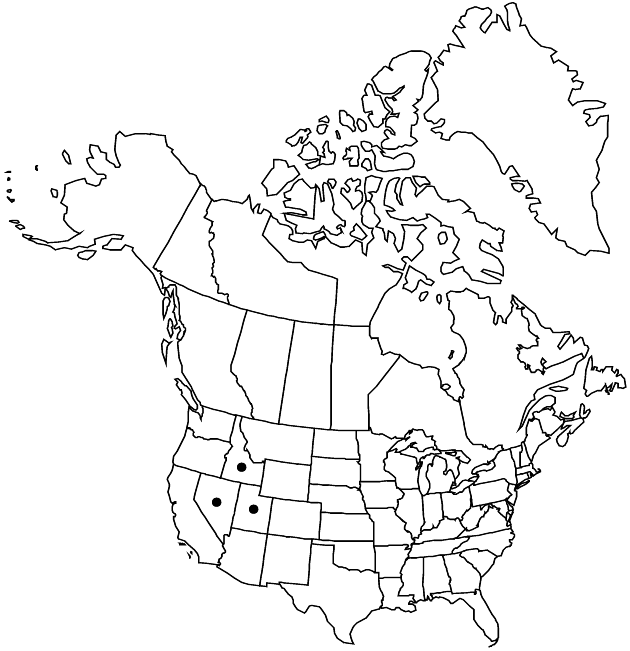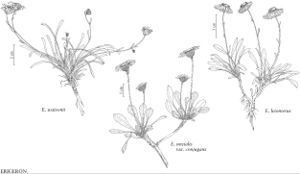Erigeron watsonii
Brittonia 6: 207. 1947.
Perennials, 3–10 cm; taprooted, caudices sometimes multicipital, branches relatively short and thick, sometimes relatively long and slender. Stems ascending to decumbent-ascending, glabrous, eglandular. Leaves mostly basal (persistent); blades narrowly oblanceolate to spatulate (often folding), 15–60 × 1–5 mm, cauline abruptly reduced distally, margins entire, abaxial faces glabrous, adaxial sparsely strigose, eglandular. Heads 1(–2). Involucres 4–7 × 5–10 mm. Phyllaries in 2–3 series (inner usually with purple margins), glabrous, minutely glandular. Ray florets 13–25, corollas white to pink, 4–6 mm, laminae not coiling or reflexing, spreading. Disc corollas 2.8–4 mm. Cypselae 2–3.2 mm, 2-nerved, faces sparsely strigose; pappi: outer of setae, inner of 25–35 (straw-colored, dull) bristles.
Phenology: Flowering Jul–Sep.
Habitat: Gravelly or rocky slopes, ridge tops, talus, soil pockets, sagebrush, limber pine-fir
Elevation: 2400–3300 m
Distribution

Idaho, Nev., Utah.
Discussion
Selected References
None.
